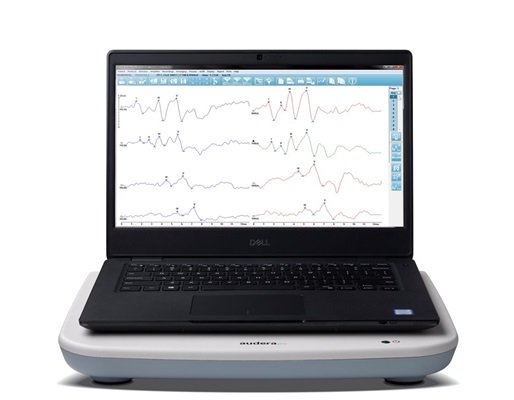Expanding the diagnostic services in your audiology clinic is essential for providing high-quality care to a diverse range of patients as well as growing your clinic’s revenue. One of the most impactful additions you can make to your clinic is integrating Auditory Brainstem Response (ABR) testing into your suite of diagnostic offerings. Not only will this tool enhance your clinic’s capabilities, but also elevate the quality of care you are able to provide while growing your practice. Continue reading this blog to learn more about the benefits of adding ABR testing to your clinic.
ABR Provides Comprehensive Diagnostic Capabilities
ABR testing offers a detailed evaluation of the auditory pathways, making it a critical tool for diagnosing hearing loss, auditory neuropathy, and retrocochlear pathologies. With ABR, your clinic can expand its range of services, allowing for a more complete understanding of your patients’ auditory health.
Ideal for Pediatric and Hard-to-Test Populations
One of the biggest advantages of ABR is its usefulness in testing patients who are difficult to assess with traditional methods. This includes infants, young children, and patients who cannot actively participate in standard hearing tests.
ABR testing is non-invasive and does not require the patient’s cooperation, making it an ideal solution for these populations. By offering ABR, your clinic can effectively diagnose hearing issues in these groups, ensuring they receive the care they need and expanding your testing capabilities.
Enables Early Intervention for Infants and Young Children
Early detection is key to managing hearing loss, especially in newborns and young children. ABR testing allows your clinic to perform accurate threshold testing, enabling early intervention for hearing impairments. Early diagnosis and intervention are crucial for supporting speech and language development, helping pediatric patients achieve better long-term outcomes.
Versatile Applications
ABR testing is highly versatile and can be used in a variety of cases. Whether you’re determining hearing thresholds, assessing neural integrity, or screening for auditory neuropathy, ABR is an adaptable diagnostic tool that provides precise and reliable results. Its flexibility makes it a valuable addition to your clinic, allowing you to handle a wide range of diagnostic scenarios.
Adding ABR To Your Clinic
Integrating ABR testing into your audiology clinic is a strategic move that benefits both your practice and your patients. From expanding your diagnostic capabilities to offering specialized services for pediatric and hard-to-test populations, ABR enhances the level of care your clinic provides. It also creates new opportunities to grow your clinic’s patient base, reputation, and revenue. If you’re looking to take your clinic to the next level, ABR testing is an invaluable addition.
GSI Audera Pro
ABR is just one of the test types that can be performed with the GSI Audera Pro™. The Evoked Potential module within the Audera Pro includes a variety of evoked potential test types including ABR, ECOG, P300, and VEMP. The Audera Pro also includes normative data for infants and adults, as well as a variety of test stimuli including CE-Chirp, CE-Chirp Octave Bands, clicks, and tone bursts.

The addition of the Audera Pro to your clinic will differentiate your diagnostic offerings from your competitors and keep you top of mind as the clinic recommended to a patient needing additional testing. Learn more about the Audera Pro on the product page.
Are you looking to learn more about ABR? Check out this blog post written by e3 on ABR troubleshooting.